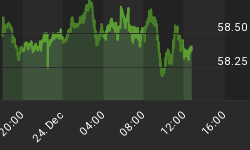Market turmoil deepens as oil prices push to a new record of $142.22 per barrel, triggering fresh declines in global equities. The US-centric nature of bank write-downs and macro economic weakness is prolonging broad USD weakness, which is making the current turmoil different from that of November, August and February when the unwinding of the carry trade was boosting USD, JPY and CHF at the expense of the high yielding AUD, NZD and GBP.
Dissecting Currency Returns in first 6 months
The first chart on the left shows the Swiss franc, Australian dollar and euro are the top performing currencies in terms of total returns, outperforming the Canadian dollar (worst performer), New Zealand dollar and US dollar. The British pound has also moved up from the bottom of the ranks after surging UK inflation reduced expectations of further rate cuts from the Bank of England.
Another way to gauge secular currency performance is to assess gold performance in the various currencies and to compare returns in gold terms. The chart on the right is consistent with the left the chart, showing gold is the highest performer against CAD, NZD and USD and the least performer against CHF, AUD and EUR.

The strength of the Swiss franc is underlined by the currency's dual benefiting from reduced risk appetite and its high correlation with the euro. Specifically, Switzerland's current account surplus of more than 14% of GDP is the main rationale of the currency's safe haven status. Unlike the Japanese yen, which has been hit by slowing US growth and rising oil import costs, the Swiss economy is less exposed to the US.
The Aussie continues to gain from rising prices of wheat, copper and gold as long as inflationary expectations remain robust, which continue to justify the RBA's 7.25% interest rate. Unlike in past bouts of falling risk appetite when the Aussie would drop rapidly across the board including the USD, today the currency remains close to its record highs against the dollar and the pound. This maintains our bullishness with the pair, eyeing interim resistance at 0.9635, followed by the 24-year high of 0.9665. Unlike the NZD, whose high 8.25% rate is seen hampering the already faltering NZ economy, AUD remains underpinned by surging commodity receipts and robust demand from China and rest of Asia/Pacific. Recall in our 2008 FX Preview, we anticipated AUDUSD to have 70% chance of hitting parity in H2 2008. The path remains alive and well. We also continue to favor AUD vs GBP, NZD and CAD.

EUR continues to stand among top performing currencies, partly resulting from its role of anti-USD as well as from hawkish rhetoric from the ECB. An ECB rate hike next week is likely to prompt EURUSD past $1.59, while rising oil prices, which remain propped by their own fundamental dynamics persist in boosting the single currency. These forces are offsetting the perceived cracks in the Eurozone economy.
Today's oil-driven CAD rally does not reflect the currency's overall performance of the past 6 months, which has remarkably fallen to worst performing currency due to aggressive rate cuts from 4.25% in December to 3.00% today. The Bank of Canada's active talking down of the currency has managed to offset the usual positive impact from oil prices. The role of the US downdraft on Canada's economy can be compared to that on the Japanese yen, which is another currency showing more modest performance than last year. Nonetheless, we expect USDCAD to remain capped at 1.03 in the medium term, while support is seen climbing at 0.9980.
Although JPY has lost some of its negative correlation with falling equities, we anticipate renewed but gradual gains vs USD and NZD with 102 and 77 seen as the likely targets before end of June. As long as the Fed refrains from succumbing to market and economic pressures, equities will continue to lose support, breaching key technical levels as the chart shows below. Recall last week we warned that the S&P500 was a few points away from falling below the 100-week moving average, a pattern not seen since April 2001. Yesterday, the moving average cross over did occur, a leading to a technical significance underlined by the fact price repercussions of short-term moving averages falling below longer term averages, implying that the appreciable rate of deterioration in current price trends. The importance of the relationship is also substantiated by the fact that 100-50 week average crossover of April 2001 occurred when the S&P500 dropped 13% off its March 2000 high, while the current price point coincides with a 17% decline off the October record high.

















